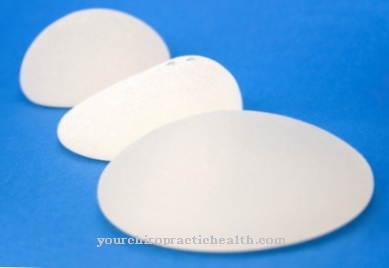A Cannula represents a hollow needle that is used as part of a syringe to penetrate human or animal tissue in order to inject or withdraw liquids. In medicine it is used for diagnostic and therapeutic purposes. For hygienic reasons, cannulas are now almost exclusively used once for routine measures.
What is a cannula?

Cannulas play an indispensable role in medicine. They are hollow needles through which injections or blood withdrawals are carried out. They can also be used as mandrels to insert catheters.
Depending on the intended use, the length, outer diameter and cut of the cannulas vary. There is usually an oblique cut at the end of the cannula. As a result, it makes a small cut when it penetrates the tissue. This cut ensures that the puncture (piercing into the tissue) is not as painful.
If an injection is to be made into existing body openings or cavities, blunt cannulas are used. The tissue is not injured. These cannulas are ground blunt and cut vertically.
In the case of button cannulas, there is still a bead-shaped, thickened head. They are mainly used in dentistry.
Shapes, types & types
Cannulas can be classified according to indication, properties or use. Depending on the purpose for which they are indicated, there are biopsy cannulas, tracheal cannulas, injection cannulas, puncture cannulas or irrigation cannulas.
The length, diameter and ship play a role in the properties. The size of cannulas can be specified in various dimensions. The outside diameter is shown in millimeters. The representation in gauge (G) shows the fineness of the outside diameter. The larger the number of the gauge, the thinner the cannula. Furthermore, the cannula can be ground to a point or blunt.
After use, there are disposable cannulas or multiple cannulas. For reasons of hygiene, only single-use cannulas are used in Germany today for blood withdrawals and injections. Needles often have to be inserted into blood vessels for injection or to draw blood. These require a sharp cut in order to open the tissue of the blood vessel through an incision.
For some applications, such as in dentistry, cannulas are often only used to introduce rinsing fluids or medication into an existing body opening (body cavity). In this case, no tissue needs to be opened. Cannulas with a blunt cut or with a bead-like, thickened head are used. These cannulas are also used to supply wounds with medication.
A cannula can also be used as a stylet. In this case, it serves as an aid to inserting catheters or tubes. When the catheter or tube is in the right place, the stylet is removed again.
Structure & functionality
Cannulas are very often used to open blood vessels. Blood withdrawals and injections are routine measures in medical use. Here cannulas with a sharpened bevel must always be used.
This will create a cut. If this angled cut were not present, the tissue would only be painfully displaced. In order to keep the injection as painless as possible, some cannulas are also coated. After piercing the tissue, the sharpness of the cut disappears again. The next application would be much more painful. Therefore the cannula is disposed of immediately after a single use.
When taking blood or tissue, the samples are drawn in through the narrow channel of the hollow needle. In contrast, with the injection, the material to be injected (blood, electrolyte solution, nutrient solution, medication and much more) is injected into the target tissue or into the blood vessel. In both cases the cannula is attached to a storage container of the syringe, which either contains the injection solution or is filled when the blood and sample are taken.
Cannulas also act as mandrins to open blood vessels or other tissue parts for the insertion of catheters or tubes. Biopsies by puncturing certain organs can also be performed using cannulas. Cannulas for treating wounds with medicaments are also widely used.
Medical & health benefits
Cannulas are of great medical importance. They are used for diagnostic purposes when taking blood and removing tissue for biopsies. Injections take up a lot of space. For example, blood transfusions, electrolytes, injections of nutrient solutions, hormone replacement therapies and much more would not be possible without cannulas.
Another large area of application for cannulas is the supply of drugs in medicine and dentistry. The introduction of cathethers and tubes is often ensured by cannulas. In emergency medicine, many life-saving measures would not be possible without cannulas.
It is of course important to use them properly. Cannulas can also be the source of diseases. In the past, infectious diseases were often transmitted through syringes. The cannulas were often used several times, and in some cases their disinfection even failed. That is why the strict rules for single-use cannulas apply today.
However, health impairments due to improper use of cannulas and syringes cannot be ruled out at present. They always have to be sterilized before use. When performing infusions, care must always be taken to ensure that no air can get into the blood vessels. This is a serious emergency that can lead to an air embolism.
Overall, the medical importance of cannulas cannot be overestimated. They were used medicinally in ancient times.

















.jpg)



.jpg)

.jpg)




